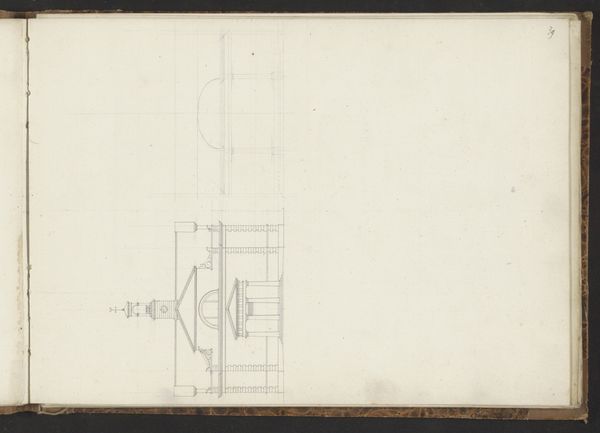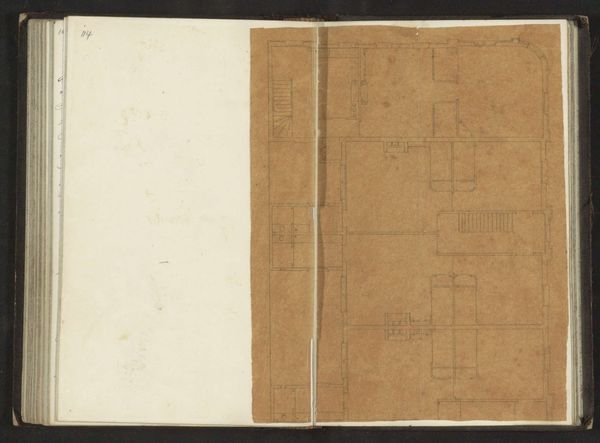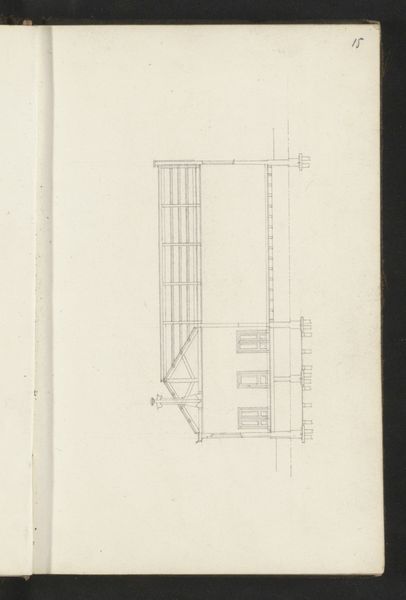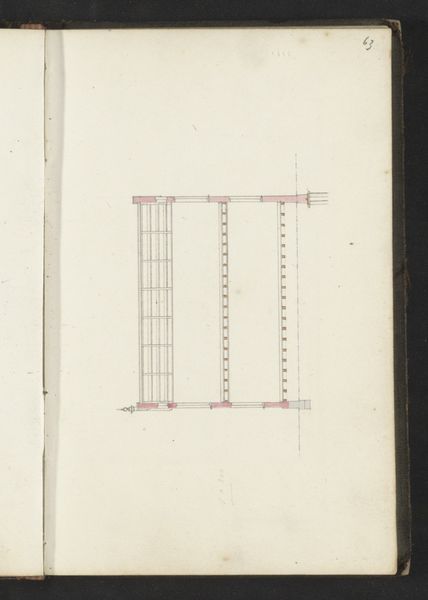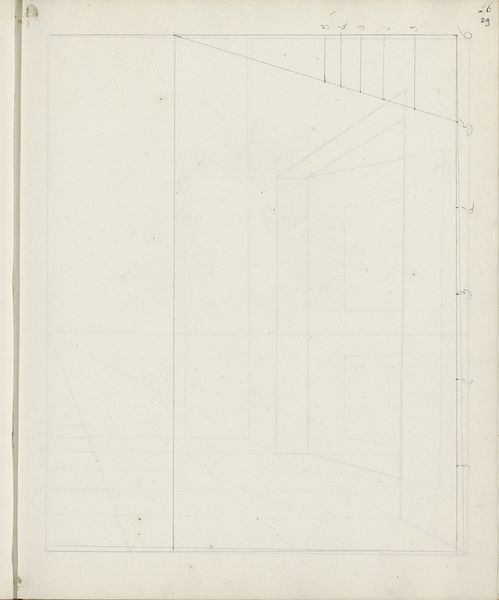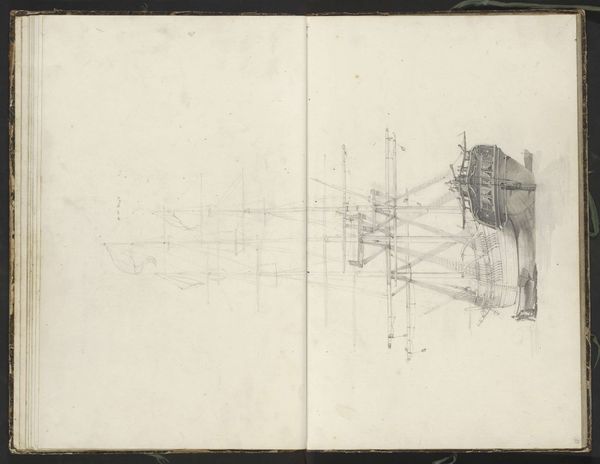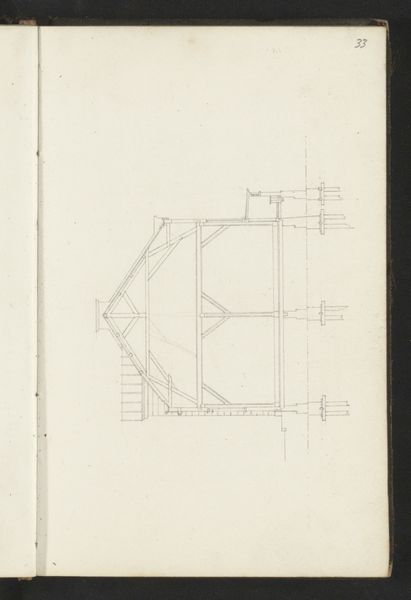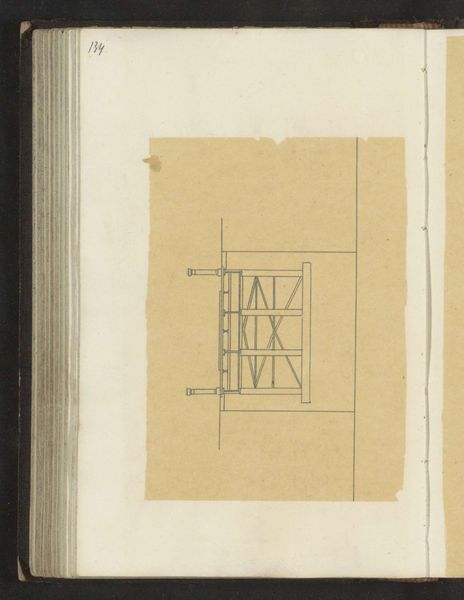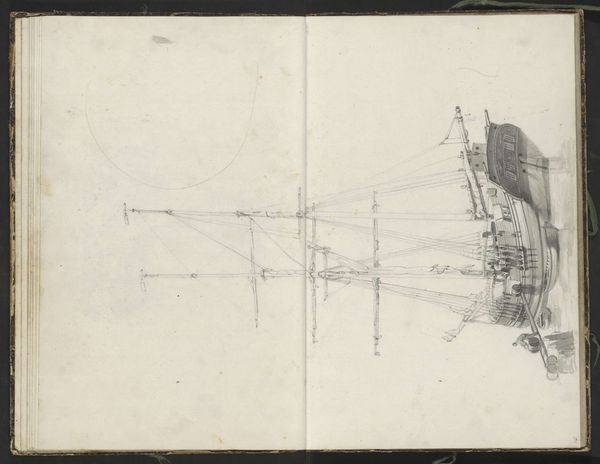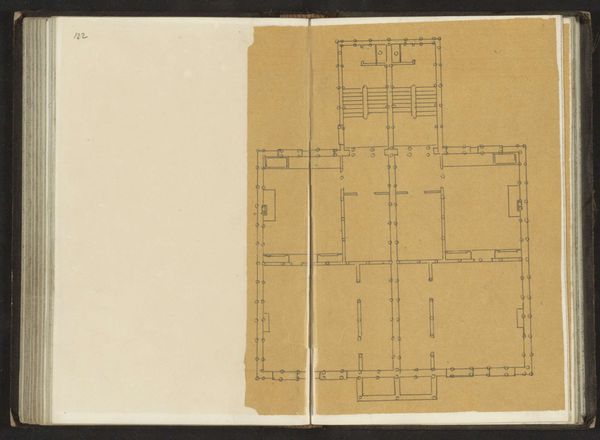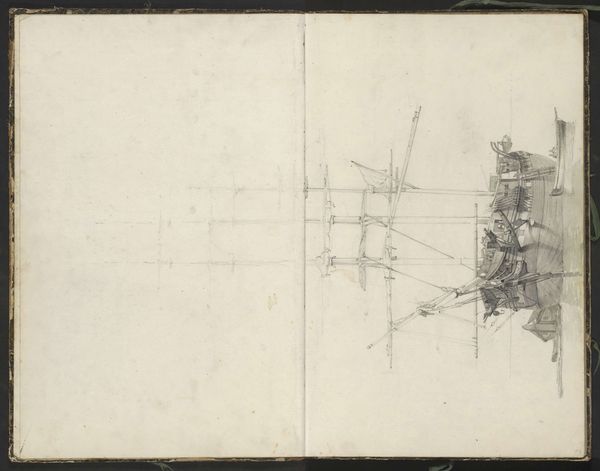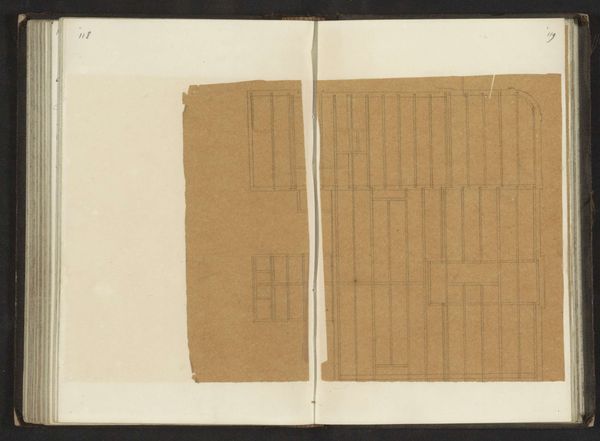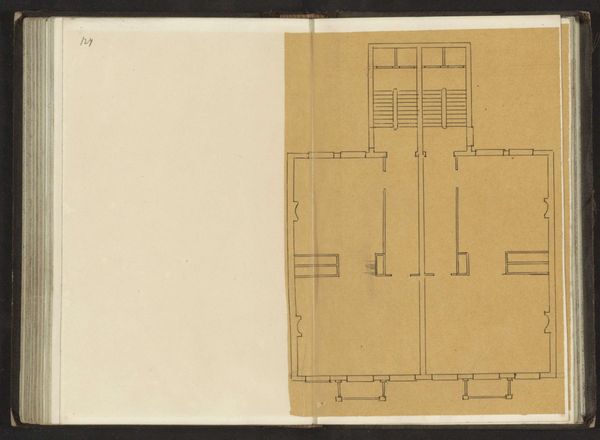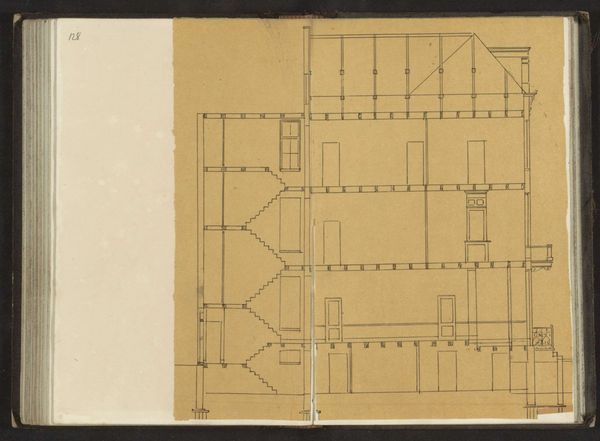
drawing, paper, ink
#
drawing
#
paper
#
ink
#
geometric
#
line
#
academic-art
Copyright: Rijks Museum: Open Domain
Curator: This intricate diagram is entitled "Plattegrond," an ink drawing on paper by Willem Springer Jr., dating back to around 1864. Editor: The meticulous lines really grab me. It feels like looking at the bare bones, the framework of something massive and complex, all laid out with incredible precision. Curator: Absolutely. And that's quite relevant, considering Springer's place in the history of architecture. His detailed drawings not only give us insight into 19th-century architectural methods, but reveal the socio-political investment of space and organization of civic projects during a time of considerable upheaval. What does the rigid geometry here express? Editor: I'm immediately thinking of the social engineering aspect. It looks like something almost skeletal... almost like you're planning or thinking in terms of structure: like something meant to create, but perhaps in a sterile sort of way. What was life like when this was made? What were its material consequences? Curator: Mid-19th century was fraught with socio-economic anxieties related to modernization, and such geometric drawings, became statements in favor of rationalization. Springer's choice of the line—unwavering and seemingly objective—would embody principles that also apply to urban design and industrial organization. It becomes a manifestation of control. How do you see that playing out materially? Editor: Ink and paper are economical in some senses: They don’t obscure the work involved in developing the drawing itself; the artist made deliberate choices. But its simplicity seems at odds with whatever monumental physical structure it refers to, and it's this relationship, this disjunction between conceptual plan and heavy, physical realization of the architectural plans, that I find compelling. Curator: Precisely. Considering this Plattegrond's relationship with larger power structures reveals how even seemingly abstract artistic endeavors serve, even subtly, to reinforce—or challenge—dominant cultural narratives through the very structures they design, the materials they employ, and the social roles they tacitly approve or subvert. Editor: I agree. For me, Springer’s drawing gives a valuable insight into the materiality of thought: The way in which something complex is distilled into a practical and usable abstraction of human vision. The artist here seems to explore and codify in turn. Curator: Thank you. Your attention to both its physical form and socioeconomic setting encourages us to reflect further. Editor: And for you, to situate within that form the cultural values inherent in its structural components. It shows what art can express!
Comments
No comments
Be the first to comment and join the conversation on the ultimate creative platform.
